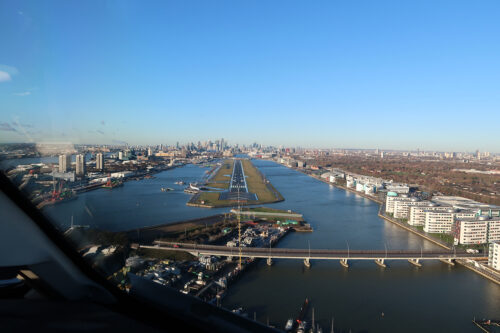
Newsroom
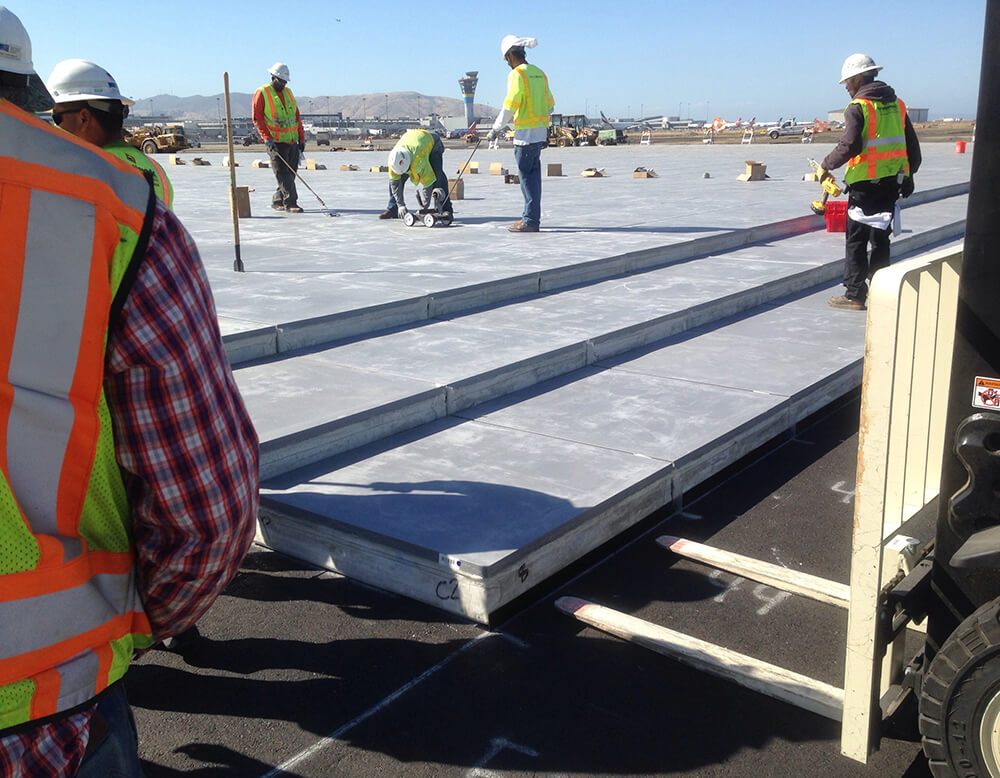
10.08.2023
Enhance Runway Safety and Maximize Peace of Mind with Runway Safe EMAS Systems
Enhancing Runway Safety with Cutting-Edge EMAS Systems
Did you know that runway excursions can pose a significant threat to the safety of your airport operations? At Runway Safe, we understand the paramount importance of keeping you, your passengers, and your valuable assets secure, especially during unforeseen events like runway excursions. That’s why EMAS systems are meticulously designed to not only provide you with peace of mind but also to enhance runway safety like never before.
Overcoming Limited Runway Space: Innovative Solutions by Runway Safe
Imagine having an innovative solution that tackles the challenges of limited runway space head-on. The EMAS systems are the ideal choice when a full-dimension runway safety area seems unattainable due to site constraints. Whether your airport faces obstacles such as tabletop mountains, roads, railroads, waterways, or buildings in close proximity to the runway, EMAS systems offer an unrivaled and highly effective solution to mitigate risks and ensure the safety of your operations.
Passive Safety at Its Best: How EMAS Systems Ensure Runway Protection
What sets EMAS systems apart is their passive nature, eliminating the reliance on Air Traffic Controllers or pilots to take immediate action. Picture a sophisticated system, meticulously configured to safely stop aircraft during runway excursions by exerting predictable deceleration forces on the landing gear. Rest assured, the systems adhere to the highest safety standards, meeting the rigorous FAA Advisory Circular AC150/5220-22B and ICAO Annex 14 guidelines, providing the utmost safety assurance for your airport.
Tailored Performance: Customized EMAS Solutions for Your Unique Airport
Every airport is unique, and a tailored approach is essential for optimal performance. That’s why our dedicated performance engineers work closely with your airport team and experienced airfield consultants during the design phase. Taking into account over 100 variables for each operating aircraft, we customize the EMAS system to accommodate your specific aircraft fleet mix while optimizing performance within local restrictions. You can be confident that the solution perfectly aligns with your airport’s requirements.
Flawless Installation: Stringent Quality Control for Reliable EMAS Systems
Installation is a critical phase, and we take pride in being present on-site to ensure stringent quality control and validate materials and processes. We commit to excellence and ensure that everything is executed flawlessly and in accordance with industry standards, giving you the utmost confidence in the reliability and effectiveness of our EMAS systems.
Durability and Longevity: Engineered for Reliability and Peace of Mind
With a technical lifespan of 20 years, the EMAS systems are engineered to be durable and reliable, offering longevity and peace of mind for years to come.
Compliance and Service Agreements: Extending the Life of Your EMAS System
To further extend the life expectancy of the EMAS system and ensure compliance with the stringent US Part 139 requirements, we provide customized service agreements. A dedicated Life Cycle Team collaborates closely with your airport, developing a personalized plan that considers your unique installation environment and the capabilities of your maintenance team.
Proven Track Record: Runway Safe EMAS Systems Deliver Exceptional Safety
When it comes to runway safety, there’s no room for compromise. The EMAS Systems is the proven choice for exceptional safety performance. The track record speaks for itself, having saved numerous lives, protected valuable assets and infrastructure, and significantly improved runway safety at airports worldwide.
Safety is our priority and our mission! EMAS Systems enhance your airport’s operational safety in the event of an aircraft runway excursion. Discover the peace of mind and unparalleled safety measures that our advanced solutions bring to your airport and all stakeholders involved.
Don’t settle for anything less when it comes to your runway’s safety. Enhance runway safety and maximize peace of mind with EMAS Systems – the ultimate in safety and reliability.
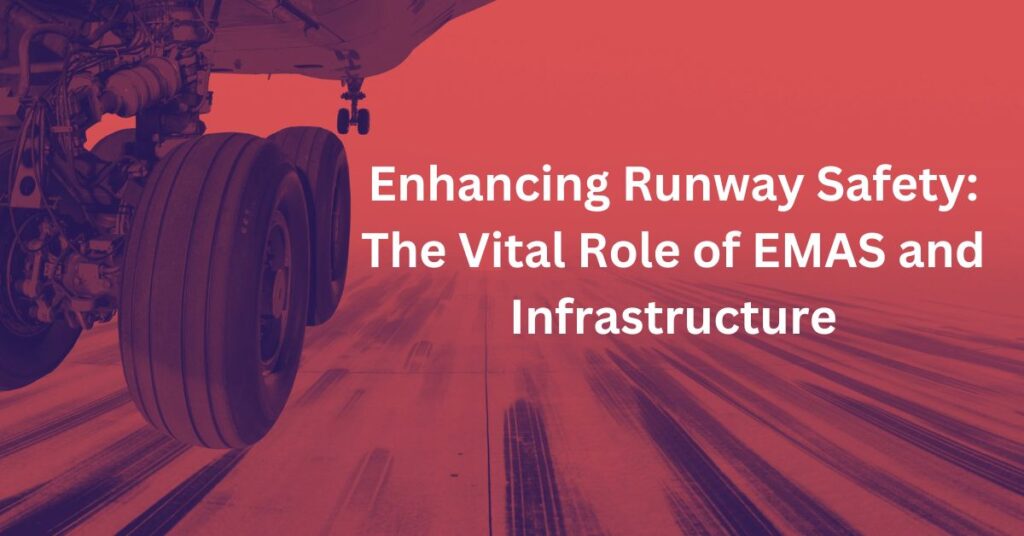
18.07.2023
Enhancing Runway Safety: The Vital Role of EMAS and Infrastructure
Safety is a top priority in the aviation industry, and airports play a crucial role in ensuring the well-being of passengers and aircraft operations. Among the various measures implemented to enhance runway safety, Engineered Materials Arresting Systems (EMAS) and robust infrastructure stand out as key components. In this article, we will explore the significance of EMAS installations and infrastructure development in promoting safety and driving operational excellence at airports.
Engineered Materials Arresting Systems (EMAS):
EMAS installations have revolutionized runway safety by providing a reliable solution to minimize and reduce the consequencens of runway excursions and mitigating potential accidents during takeoff and landing. These innovative systems consist of crushable material strategically placed at the ends of runways, serving as an engineered buffer zone. Upon impact, the EMAS absorbs an aircraft’s energy, allowing for controlled deceleration and preventing collisions with obstacles or terrain beyond the runway.
Safeguarding Passengers and Aircraft:
EMAS plays a vital role in safeguarding passengers, crew, and aircraft. By extending the stopping capability of an aircraft, EMAS installations significantly reduce the risk of runway excursions, which can lead to severe accidents and injuries. The system’s ability to bring an aircraft to a safe stop, even in challenging conditions or unforeseen circumstances, enhances overall safety standards and instills confidence in travelers and industry stakeholders.
Robust Infrastructure Development:
Infrastructure development forms the backbone of efficient and safe airport operations. Well-designed runways, taxiways, aprons, and associated infrastructure contribute to seamless aircraft movements and enhance overall operational efficiency. A focus on infrastructure encompasses factors such as runway length, surface condition, lighting, signage, and overall maintenance. Investing in high-quality infrastructure ensures safe operations, minimizes delays, and supports sustainable growth in the aviation sector.
Collaboration for Enhanced Safety:
The successful integration of EMAS installations and robust infrastructure requires collaboration among airport authorities, regulatory bodies, airlines, and industry experts. Effective coordination ensures that safety considerations are incorporated at every stage of airport planning, design, construction, and ongoing maintenance. Collaboration also enables the sharing of best practices, lessons learned, and the adoption of innovative solutions to continuously enhance safety standards.
Future Perspectives and Industry Advancements:
As the aviation industry evolves, embracing technological advancements and innovative practices is essential for further enhancing runway safety. This includes leveraging materials for EMAS installations, incorporating smart technologies for real-time monitoring of infrastructure, and implementing predictive maintenance systems. Additionally, the integration of artificial intelligence, data analytics, and automation can further enhance runway safety by identifying potential risks and enabling proactive decision-making.
Conclusion:
Engineered Materials Arresting Systems (EMAS) and robust infrastructure are integral to ensuring runway safety and operational excellence at airports. EMAS helps minimizing and reducing the consequences of runway excursions and providing extended stopping capabilities, EMAS installations safeguard passengers, crew, and aircraft. Coupled with well-designed and maintained infrastructure, airports can optimize operational efficiency and deliver a safe and seamless travel experience. Through collaboration, industry stakeholders can work together to embrace emerging technologies and best practices, reinforcing the commitment to continuous improvement and ensuring a secure and sustainable future for aviation.
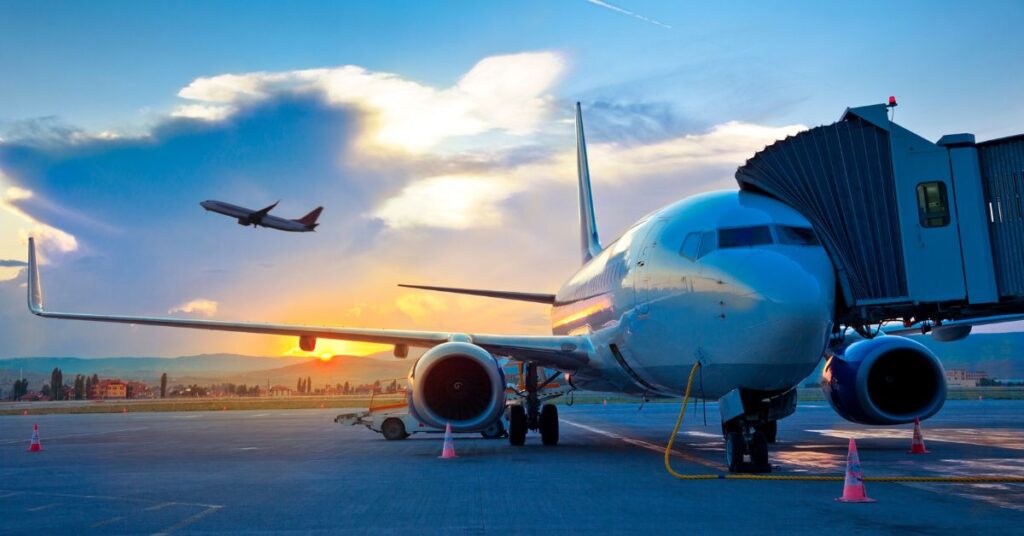
10.07.2023
The Advantages of Implementing EMAS at Airports: Enhancing Safety, Compliance, and Reputation
Discover the Benefits of Engineered Material Arresting Systems (EMAS) for Airports
Having an Engineered Material Arresting System (EMAS) installed at an airport offers numerous benefits and advantages. Here are some key points highlighting what an airport can gain by implementing EMAS:
Enhanced Safety
EMAS provides an additional layer of safety at the end of a runway by effectively mitigating the risks associated with runway overruns. It helps to safely decelerate an aircraft, reducing the potential for damage to the aircraft, injuries to passengers and crew, and harm to ground personnel or nearby infrastructure. EMAS significantly contributes to improving overall runway safety, safeguarding lives, and reducing the impact of accidents.
Regulatory Compliance
Many civil aviation authorities require airports to comply with safety regulations and guidelines. By installing EMAS, airports can demonstrate their commitment to meeting and exceeding safety standards. Compliance can help maintain a positive relationship with regulatory bodies and avoid potential penalties or legal implications associated with non-compliance.
Reputation and Trust
Implementing EMAS showcases an airport’s dedication to ensuring the safety of passengers, airlines, and the surrounding community. It enhances the airport’s reputation as a responsible and safety-conscious entity, increasing trust and confidence among passengers, airlines, and stakeholders. This can lead to improved customer satisfaction, increased passenger numbers, and positive brand perception.
Risk Mitigation and Liability Reduction
EMAS helps mitigate the risks and liabilities associated with runway overruns. By having an EMAS system in place, airports can minimize the potential for costly damages to aircraft and infrastructure, reducing the likelihood of legal proceedings and insurance claims. This proactive risk management approach can lead to financial savings, lower insurance premiums, and a stronger financial position for the airport.
Extended Runway Length
EMAS can effectively extend the usable length of a runway. By providing an engineered area at the end of the runway for deceleration, EMAS allows airports to optimize their runway capacity and potentially accommodate larger aircraft or handle challenging operational conditions. This flexibility can enhance operational efficiency, support growth, and attract a wider range of airline operators.
Compliance with Future Regulations
As aviation safety standards evolve, there may be an increasing focus on runway safety and the adoption of technologies like EMAS. By installing EMAS proactively, airports can position themselves ahead of potential future regulatory requirements, ensuring readiness for upcoming safety standards.
In summary, having an EMAS at an airport offers tangible benefits such as enhanced safety, compliance with regulations, improved reputation, risk mitigation, and the potential for increased operational capacity. These advantages contribute to the overall success, competitiveness, and long-term sustainability of the airport.

10.11.2022
Runway Safe EMAS solutions fill a critical need for regulators and airport operators
If you are a frequent flyer, you might have experienced a final approach over water or highways all the way to the runway. The reason for this is that many large cities and megacities are near some form of waterways, roads or mountainous areas. Runway Safe EMAS solutions fills a critical need for regulators and airport operators
To minimize the hazards of overruns, the Federal Aviation Administration (FAA) incorporated the concept of a safety area beyond the runway end into airport design standards. The current FAA policies, has ordered each airport to have 1,000 feet of extra space at the end of their runways, called runway end safety area (RESA) whereas the International Civil Aviation Organization (ICAO) Annex 14 recommends airports to have a RESA of 240m beyond the 60m strip and requires a RESA of 90m beyond 60m runway strip. Many airports are designed with shorter RESA distances than desired to meet today’s regulations, leaving airport operators with only a few options.
The RESA can be extended by allocating more land at the end of the runway or declared distance of the runway. Declared distances are specific lengths of runway that is published for aircraft operations, specifically when taking off or landing and are defined for pilots to understand their allowable take-off and landing weights and speeds. Where no extra land is available, or where reduced declared distance has an impact on capacity, the installation of an EMAS is a sensible choice. EMAS gives protection against runway overruns into obstacles such as buildings, roads, rivers, steep embankments and the like.
Knowing this, the FAA approached Engineered Arresting Systems Corporation, ESCO, (now Runway Safe) in the 1990’s to ask for help with improving the runways of commercial airports. Runway Safe has played an instrumental part in providing airports around the world with solutions to their challenging runway safety requirements. In 1996, through a Cooperative Research and Development Agreement, (CRADA) with FAA and the Port of Authority of New York New Jersey, Runway Safe developed its first Engineered Arresting Material System (EMAS) bed using a computer model based on data about fuselage size, landing gear, and average speeds of various aircrafts supplied by major manufacturers.
Today, Runway Safe offers two patented EMAS solutions, greenEMAS & EMASMAX®. These EMAS solutions rely on specialized engineered materials and approved/verified computer models in order to provide a controlled and predictable deceleration of an aircraft in the case of an overrun. All EMAS systems are designed specifically for the available area beyond the runway, profiles (slopes), and the range of aircraft utilizing the runway, making each installation custom to each runway end.
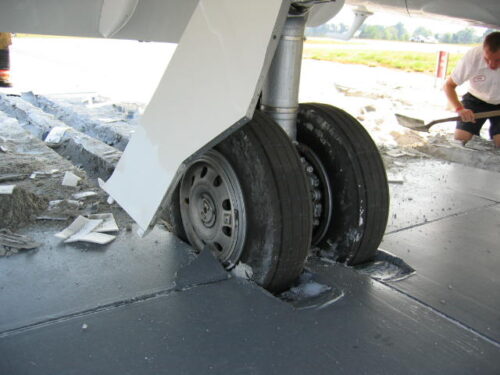
Runway Safe EMAS solutions provides safety from take-off to landing
- Increased Airport Revenue
Increased runway performance enabling traffic and payload opportunities. For airports with RESA challenges, a Runway Safe EMAS can be a commercially interesting option. Instead of reducing the declared runway distances to achieve the sufficient RESA and remain compliant, an EMAS could substantially reduce the RESA demand. This will enable keeping or even increasing declared distances such as the Landing Distance Available (LDA) and Take-Off Distance Available (TODA).
- Improved Safety
Saving human lives, protecting assets and infrastructure is what Runway Safe does daily. In case of an overrun, the Runway Safe EMAS would bring the aircraft into a safe stop without injuring passengers, pilots and other airline staff. The aircraft remains without damages and can be in traffic shortly after inspection. Surrounding roads, bridges, houses and water streams would be protected thanks to the controlled, predictable and safe stop of the aircraft.
- Regulatory Compliance
Accepted by the Federal Aviation Authority (FAA) and several national aviation authorities such as the French DGAC, Japanese MLIT and Italian ENAC among others. Runway Safe complies fully with international aviation authority guidelines of ICAO and EASA. Every installation is subject to a national approval. Runway Safe guides you through the process based on our expertise and experience.

Let us show you how an EMAS solution can assist you mitigate your runway constraints.
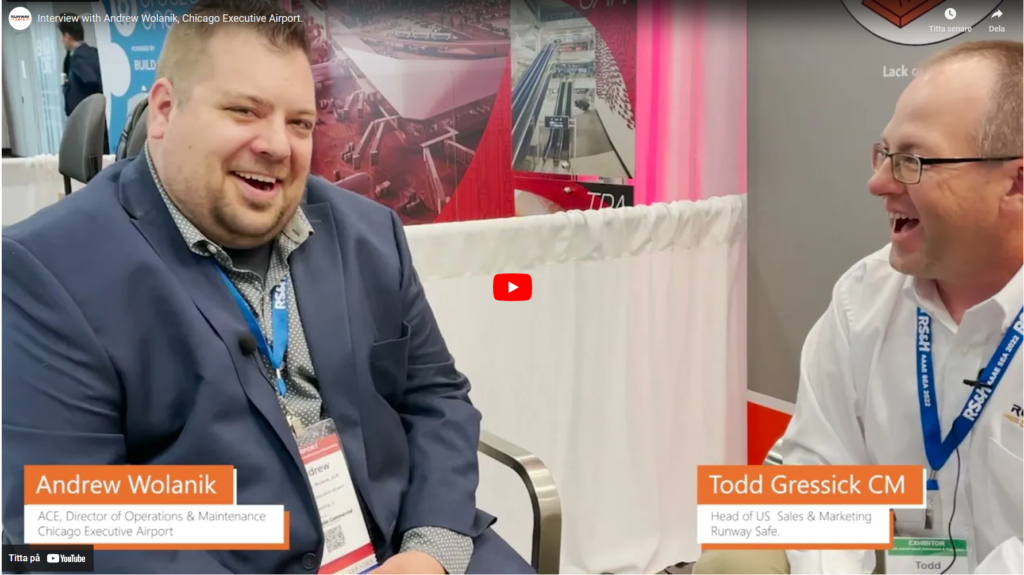
01.11.2022
Chicago Executive Airport share experience of two successful EMAS arrestments – saving lives.
Interview with Andrew Wolanik, Director of Operations & Maintenance at Chicago Executive Airport – a business general aviation airport north of Chicago. Topics they address in the interview related to the two successful EMAS arrestments are: Weather conditions, lives saved, EMAS repair, recoveries, vehicle on EMAS, when they could open runway again, EMAS maintenance and inspections.
June 2022.
Andrew talks about the first incident in January 2016:
“- It was about, roughly 03:00 or 04:00 in the morning. We had a Falcon 20 come in. It was pretty, low IFR that day. We were out there actually for snow removal operations, kind of in advance of it. If it’s like 37 and rainy you’re going to want to be out there. They did land on the runway, and they end up making it in, making our first save at the airport. Because of it, we do have two lives saved from the start.”
The second EMAS arrestment happened about 22:00 at night and Andrew continues:
“- I think it was 2019 or 2020. I can’t remember now. We had a Falcon 900 come in. Same situation. We were out there doing snow removal operations. We did report a value of 333. So, we had a quarter inch either dry or wet snow at the time. We had good MU values, in the sixties, using a Bowmonk decelerometer. With the new RCAM, it’s a little bit different than it was. We reported on the depth. We had about a quarter inch.
They did come in and they were hitting brakes hard as well. But they didn’t go in as far, thankfully. I went up getting that one out, in about three hours. So that was the quicker of the recoveries. The first one, it took us 12 hours.
By the time it went in, until the time we got to open our main runway – after the initial response too, we’re able to get our secondary runways open while we cleaned that up.”
So up overall, we were able to get the runway open as soon as possible. Which is what we’re trying to always do at our airport
Todd Gressick: “- What about the actual repair of the EMAS, was that very quick or was it a long process?”
Andrew Wolanik: “- The longest process was just the development. And it wasn’t even a long process. You guys (meaning Runway Safe) required to have a certain amount of them on hand too. It’s just the logistics you know. You must get them, you got to transfer them, and then said about runway closure. But it was not like a long “oh it’s a Covid related delay” or anything. Just the general, manufacturing process. Everybody gets it, so.
The one thing I really enjoyed about it and working with the contractor. Which you know, personally, we’ve known well over the years. They got it in in less time than they actually planned for. Which is amazing too. Which always helps the tenants and users, working for Chicago Executive airport. We want to keep them satisfied as much as possible. Even the second repair went even quicker.
I think we planned three nights total, and like, you know, we try and plan reasonably. But a little bit conservatively. And they did it in one night. I think they were done about three or four hours earlier than planned too. That’s great for that specific time. So up overall, we were able to get the runway open as soon as possible. Which is what we’re trying to always do at our airport.”
After a description of the arrestments and the repair, Todd was interested to learn more about Chicago Executive’s maintenance on the EMASs.
Todd Gressick: “- Do you guys do a lot of inspections or repair work?”
Andrew Wolanik: “-We do the actual monthly inspection which involves walking the EMAS bed. Checking all the joints, re-taping, re-caulking etc. As long as you stay on top of it, which we have over the years. As your (meaning Runway Safe’s) inspectors will know when they come out, that we have a pretty good bed. As far as the maintenance aspect of it, we do our monthly EMAS inspections. We drive by, we walk on it, check all the joints and seals. We re-caulk as necessary, we re-tape constantly, and as your inspectors will say, that we have a decent EMAS bed. Which is great to know. Knowing that we’re taking care of them pretty well. The one thing too is, we have one of our EMAS beds really close to where the actual blast comes, just due to the configuration why we have EMAS in the first place. Even with that, the bed still holds up pretty well I must say.”
We do the actual monthly inspection which involves walking the EMAS bed
Todd Gressick: “-So that’s the bed that’s been hit twice then?”
Andrew Wolanik: “-That’s one that’s been hit twice as well.
I forgot to even add in the first place. We had a third replacement too. But we did have a road vehicle in the middle of the night, drive on the airport and did take the bed at a high rate of speed. It thankfully didn’t crush on the EMAS blocks at all, but we didn’t want to have that repaired. Just because some of them were compromised, you could feel by physically walking on them, you feel them crush underneath.
Thankfully nothing was punctured. But we were able to get that fixed up pretty quickly too. That one involved a little more blocks than normal, so that repair in theory, took a little bit longer. But overall, it was very, very quick. The contractor was magnificent to getting that done.”
Prefer to view the video? Listen below.
We thank Andrew Wolanik for his time and that he are willing to share his experience with two successful EMAS arrestments at the Chicago Executive Airport.
Interview with Andrew Wolanik, former Director of Operations & Maintenance at Chicago Executive Airport – a business general aviation airport north of Chicago. Topics covered in the interview related to the two successful EMAS arrestments are:
- Weather conditions,
- lives saved
- EMAS repair
- recoveries
- vehicle on EMAS
- when they could open runway again
- EMAS maintenance and inspections.
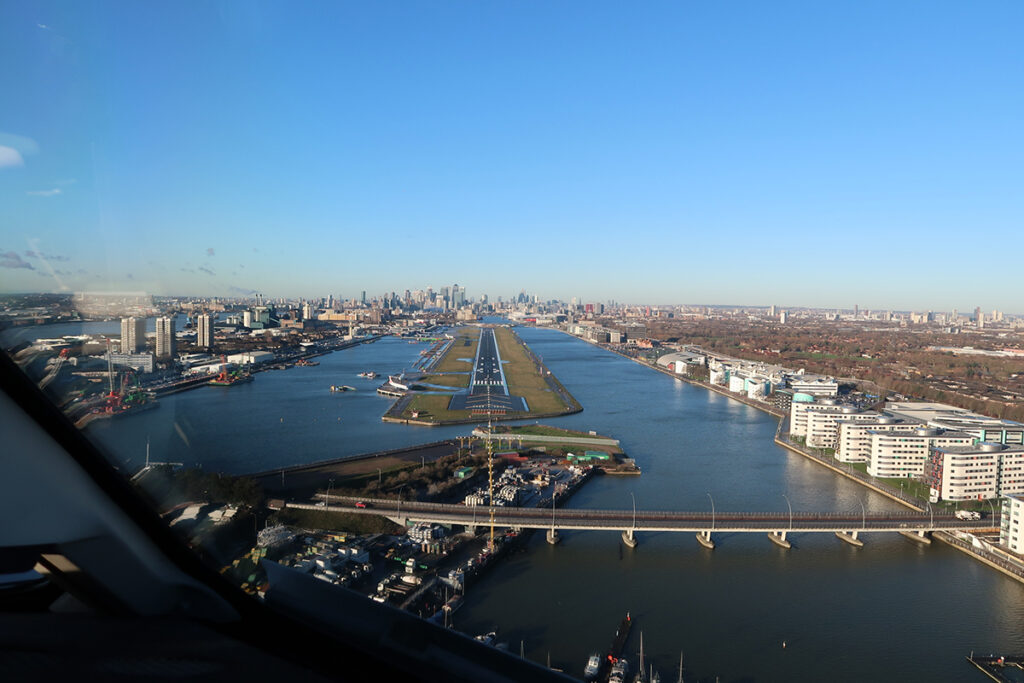
21.10.2022
London City airport invests in safety enhancing technology EMAS
We are proud to announce that, EMASEME AB, has been selected to provide Runway Safe’s EMASMAX solution for installations at each end of London City Airport’s runway in the beginning 2023.
ABOUT EMASEME |
EMASEME AB is a joint venture company between Runway Safe and KIBAG that offers Runway Safe’s EMAS solutions to support airports in the EMEA region. They combine in depth skills, expertise and experience from both owner companies to support airports with the unique and proven product line of arrestor beds (EMAS) to airports in the EMEA region to improve safety and increase efficiency. EMASEME is owned 50/50 by KIBAG and Runway Safe and is a Swedish registered company based in Gothenburg. Learn more about EMASEME here: www.emaseme.com
#london #airports #runwaysafe #runway #runwaysafety #EMASEME #londoncityairport #londoncity #EMASMAX
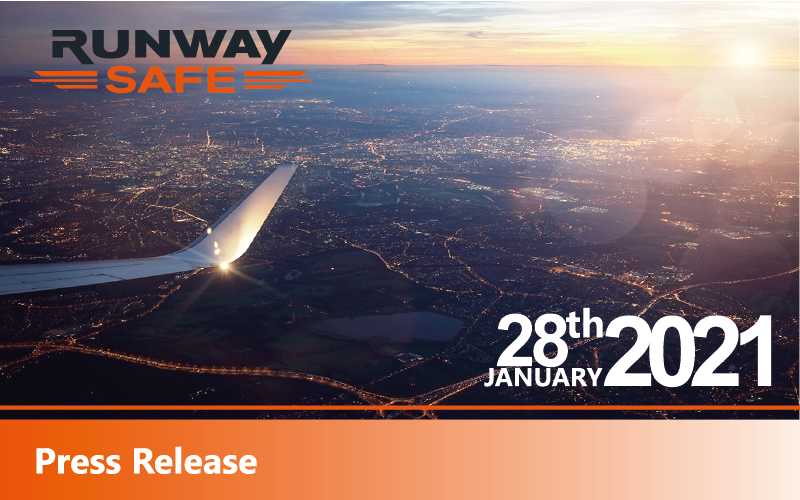
28.01.2021
Runway Safe greenEMAS system has been selected to be installed in Brazil as South America’s First EMAS Systems
Runway Safe Group is pleased to announce that we will be providing South America’s first Engineered Material Arresting System (EMAS) in 2021. Kibag Brazil Ltda & Conserva de Estradas Ltda, two construction firms with significant aviation experience who together have been awarded a contract from INFRAERO will subcontract Runway Safe to provide two greenEMAS for installation, one at each end of runway 17R-35L at Congonhas Airport (IATA: CGH, ICAO: SBSP), São Paulo. Congonhas Airport is, Brazil’s second busiest airport serving +25M passengers in 2019. Installations are currently programmed for construction later this year.
We congratulate INFRAERO and the Brazilian flying public for investing in this lifesaving technology. The new systems are designed and tailored specifically to today’s aircraft operating at the airport and will provide a level of overrun protection against the effects of any future overrun. Runway Safe is honored that our greenEMAS system has been selected for this safety improvement project.
About Runway Safe Group
Runway Safe Group offers unique and tailormade runway safety systems for airports all around the world. Our safety systems are designed by experienced engineers and approved by aeronautical regulatory bodies. The Engineered Material Arresting System (EMAS) is a passive safety system that quickly de-accelerates an aircraft and brings it to a safe stop in case of an overrun. Runway Safe Group offers a safe investment, a safe delivery and most importantly – a safe stop in the case of an aircraft overrunning the runway.
EMAS systems, now serving over 135 runways worldwide has been credited with safely arresting fifteen aircraft, ranging from a Cessna Citation to a Boeing 747, saving the lives of +350 passengers/crew members. In most cases, after extraction from the EMAS, every aircraft was able to return to service shortly after, and only the sections of the EMAS damaged by the overrunning aircraft’s tires/landing gear are to be replaced.
For further questions contact
Martin Olsson
Vice President, Head of Marketing & Sales
Runway Safe Group
martin.olsson@runwaysafe.com
+46 725 447276
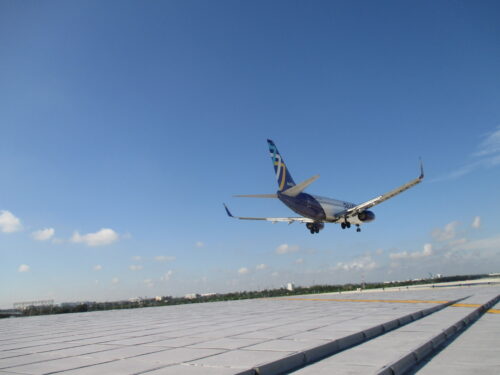
05.07.2023
Installing an EMAS (Engineered Materials Arresting System) can provide several benefits to an airport.
The primary benefit of EMAS is an increased level of safety for aircraft operations.
Read more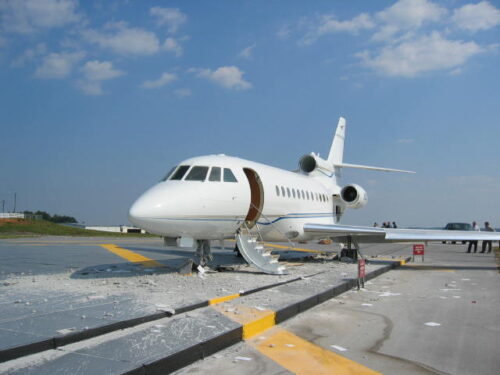
08.11.2022
Why install an EMAS?
In this short post you will learn how EMAS – a passive safety system located on airport runways, are regulated by regulatory bodies. Learn how an EMAS can help increase safety at airport’s that have runway limitations due to physical constraints around the airport such as lack of space, environment and tabletop located airports. Can […]
Read more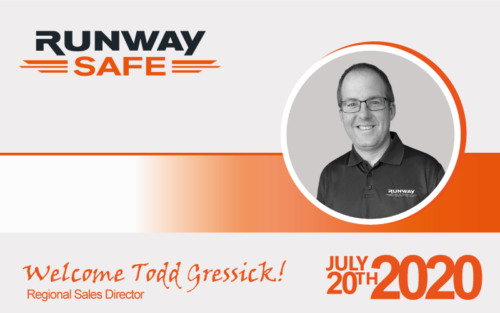
20.07.2020
Welcome Todd Gressick!
We welcome Todd Gressick to the Runway Safe Sales & Marketing team! Todd joined the team on July 20th, and we are very excited to have Todd onboard!
Read more
